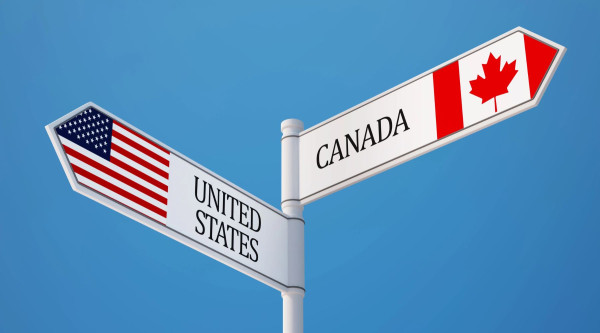Many progressive Canadians cast a strategic vote, choosing a party they believed had a better chance of winning to prevent the other from taking power.
This is a common practice in Canada, where voters often pick the “lesser of two evils” to keep certain parties out of government. But there’s usually still a “strong middle” to keep the ruling party accountable. That used to be the NDP.
But in the 2025 election, afraid of Poilievre’s Trump style politics, NDP voters fled the left-leaning party to support the Liberals, who, while flawed, were (seemingly) nowhere aligned with Trump's populist agenda.
This left the NDP with its worst election result in history, plummeting from 24% to just 6% support from the electorate. NDP leader Jagmeet Singh lost his own seat in Parliament and chose to resign.
Now, with the NDP decimated, there is no party to champion social justice, environmental protections, and minority rights.
And if you thought your strategic vote for Mark Carney would protect that, think again. Because Carney’s Liberals are becoming nearly interchangeable with the Conservatives.
Outside rhetoric, Carney's Liberals advocate, vote and prescribe policies in lockstep with the Conservatives - and even with Donald Trump. Just recently, Carney invited one of Trump’s closest advisers and mastermind of Project 2025, Kevin Roberts, to speak to his cabinet. He never actually showed up though.
Just months after being sworn in as Prime Minister, Mark Carney passed his landmark legislation called Bill C-5, also known as the Building Canada Act.
While the first part of the bill deals with removing federal trade barriers between provinces, including those affecting labour mobility, the second gives extra powers to the Feds to fast-track projects in the ‘national interest’. Specifically, the Governor in Council, under recommendation by ministers, can prioritize any project by removing Schedule One provisions from its regulatory approval.
Schedule One deals with environmental and biodiversity regulations, keeping our water and air clean. Without clear rules on which regulations can be drawn back or eliminated, experts are concerned that anything could be on the table.
According to a government announcement, the newly created Major Projects Office, based in Calgary, will help identify and fast-track ‘nation-building projects’ under Bill C-5 and streamline approvals for “all major projects across government.”
And who’s leading the charge there? Carney has appointed former Trans Mountain Corporation CEO Dawn Farrell. The expansion route of the Trans Mountain pipeline went right through unceded Indigenous land and faced years of litigation in court, going all the way to the Supreme Court, which in 2020, rejected Indigenous claims and appeals that there was insufficient consultation.
In a press release from Climate Action Network, Anna Johnston from West Coast Environmental Law says, “Appointing a former pipeline CEO to lead the Major Projects Office sends a clear signal about whose interests will be prioritized.”
Canada’s Duopoly
The Liberal focus on reducing bureaucracy by any means necessary is not unlike the campaign pledges by the Conservatives to open up energy corridors by ‘reducing red tape’.
South of the border, the Trump administration has boldly slashed environmental regulations, funding for climate action and other initiatives. It now seems like the two governing parties in the US and Canada are in lockstep on reducing environmental rules at the cost of citizens’ health.
Of the total 335 votes cast for Bill C-5, 305 voted yes, and only 30 voted no. In the past, a collective of NDP, Greens, Bloc Québécois and others would have had the political power to block or delay such a bill, but not this time. Instead, Canadians, who on average believe in Indigenous ‘right to consult’ and environmental regulation, are at the whims of two parties that, under Carney, may as well be the same.
Several other bills by provincial Conservatives and Liberals have continued to prove how similar Liberals and Conservatives are on the issue of Indigenous rights and environmental deregulation.
Bill 15
In British Columbia, a ‘sister law’ to Bill C-5 was given royal assent on May 29, 2025
Bill 15, or the Infrastructure Projects Act, gives the government tools to fast-track projects that are in the public interest, granting the Lieutenant Governor in Council the authority to designate infrastructure projects as either Category 1 or Category 2 projects. Category 1 includes projects delivered by the government, such as schools and hospitals.
Category 2 encompasses all other projects offered by non-governmental groups, including Crown corporations, Indigenous groups, and private entities. Any project can then skip several environmental assessments as seen fit by the governor. Together with Bill 14, the Renewable Energy Projects (Streamlined Permitting) Act, these bills will transform how projects are approved in what is Canada’s most progressive province.
In a news release, the British Columbia Assembly of First Nations (BCAFN) Regional Chief Terry Teegee, remarked, “Bill 15 is overreaching and enables the Province to bypass permitting processes and expedite environmental assessment for any project they deem a priority.”
The Union of BC Municipalities also raised concerns over the lack of transparency and consultation with cities by the government. One major concern is the possibility of LNG and oil pipelines. BC has long been trying to export gas and oil, but has faced backlash from environmental groups and certain Indigenous groups.
The Prince Rupert LNG project has been a big point of contention between the province and other detractors. But with Bill 15, corporate investors and government officials may have the upper hand. The NDP of BC unanimously voted to pass the bill, which they did through a tie-breaker by the Speaker of the House. Interestingly, the BC Conservatives voted against it alongside the Greens.
Bill 5
In Canada’s largest province, the Progressive Conservatives also pushed forward a similar bill, known as Bill 5.
After winning a historic third election in Ontario, Premier Doug Ford wasted little time pushing what is increasingly becoming a national agenda fought on both provincial and national fronts.
Bill 5, Protect Ontario by Unleashing our Economy Act, was enacted on June 5, 2025. Again, the law gives the provincial government broad powers to overrule existing legislation and regulatory processes to fast-track projects. The Ford government has been clear from the outset that this bill is aimed directly at assisting energy and mining projects.
One of the most concerning parts of Bill 5 is the creation of special economic zones (SEZs). SEZs are economic areas where the rule of law can be waived or stretched by governments. The most famous examples are the SEZs in China, which the government used to manufacture everything from iPhones to toys without any labour, environmental, or democratic checks.
Like Bill 15, the creation of SEZs and application of the bill to projects would be decided by Vic Fedeli, Minister of Economic Development, Jobs and Trade. Without any real checks on power, Fedeli could create an SEZ in the middle of Toronto if he wanted to. In a statement to reporters, Fedeli responded to criticism, saying, “We need to get rid of unnecessary red tape, make it easier for companies to invest, to hire and to grow, and that’s exactly what Bill 5 is going to do.”
Which red tape is excessive and which is necessary for our protection? That will now be decided by Fedeli and his staff for the ongoing future. With 71 for the bill and 44 against, the PC of Ontario used their majority to ram through a bill that many, including Indigenous groups, are calling ‘unacceptable’. But with a massive majority over the second-place NDP, there is little anyone can do to stop them.
Having a way to fast-track necessary projects, including transit, hospitals, and long-term care homes, is a good idea, but there is significant risk involved in giving one cabinet or even one politician so much power to do so. In any case, the “fast” in this “fast track” approach may very well become moot. Because the government is stepping all over the rights of Indigenous people, and they’re fighting back.
By July 16th, several First Nations groups had already filed court challenges against Bill 5 and C5. Speaking to APTN, Terry Teegee, Regional Chief of the British Columbia Assembly of First Nations, said, “It’s probably going to take a lot longer to get approval for some of these projects because we’re going to end up in court.”
According to First Peoples Law, an Indigenous advocacy group, the Feds will have legally cornered themselves with Bill C-5, as the constitutional right (duty) to consultation is under threat. “The only way out for the Carney government is to work with Indigenous people to design a custom-made process to review pending decisions to designate a project as being in the national interest.”
The similarity between Bill 5 and C-5 is proof that there are only marginal differences between our two parties. The inclusion of Bill 15 in BC shows how necessary a balance of power is in any political body. Without a vocal group on the left advocating for constitutionally held rights, parties in power act against the general will. Having an ideologically diverse Parliament has protected Canadians from much of what the US faces. So far, there is little difference between Conservative and Liberal actions in 2025.
As the progressive party most aligned with Indigenous groups, unions, and other minorities (including the Black community), the federal NDP may never be a governing party, but now it's not even influential. And we are about to see what strategic voting gets us. If a one-party state is a dictatorship, how much better is a government ruled by two parties that are barely distinguishable?

 By
By 








